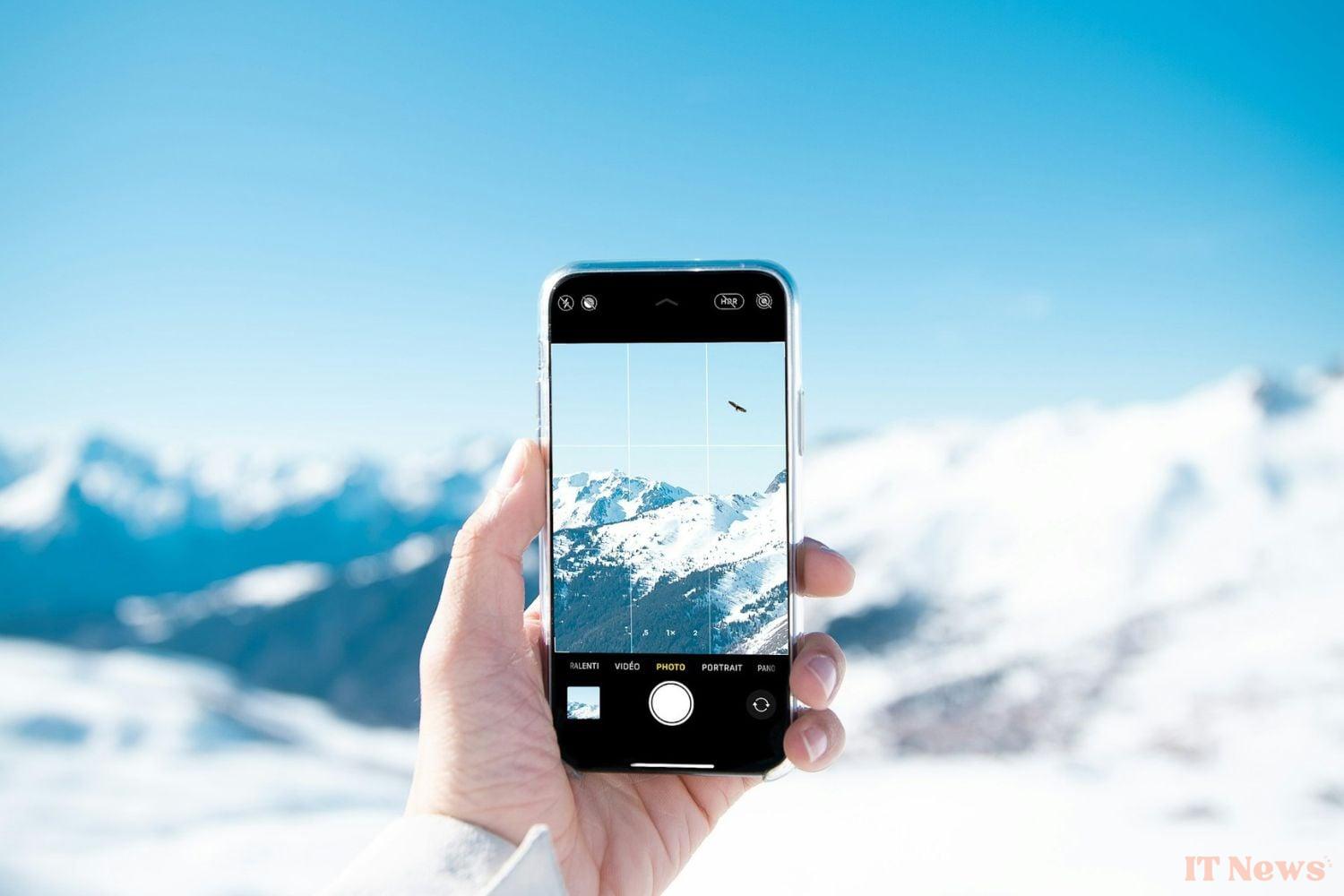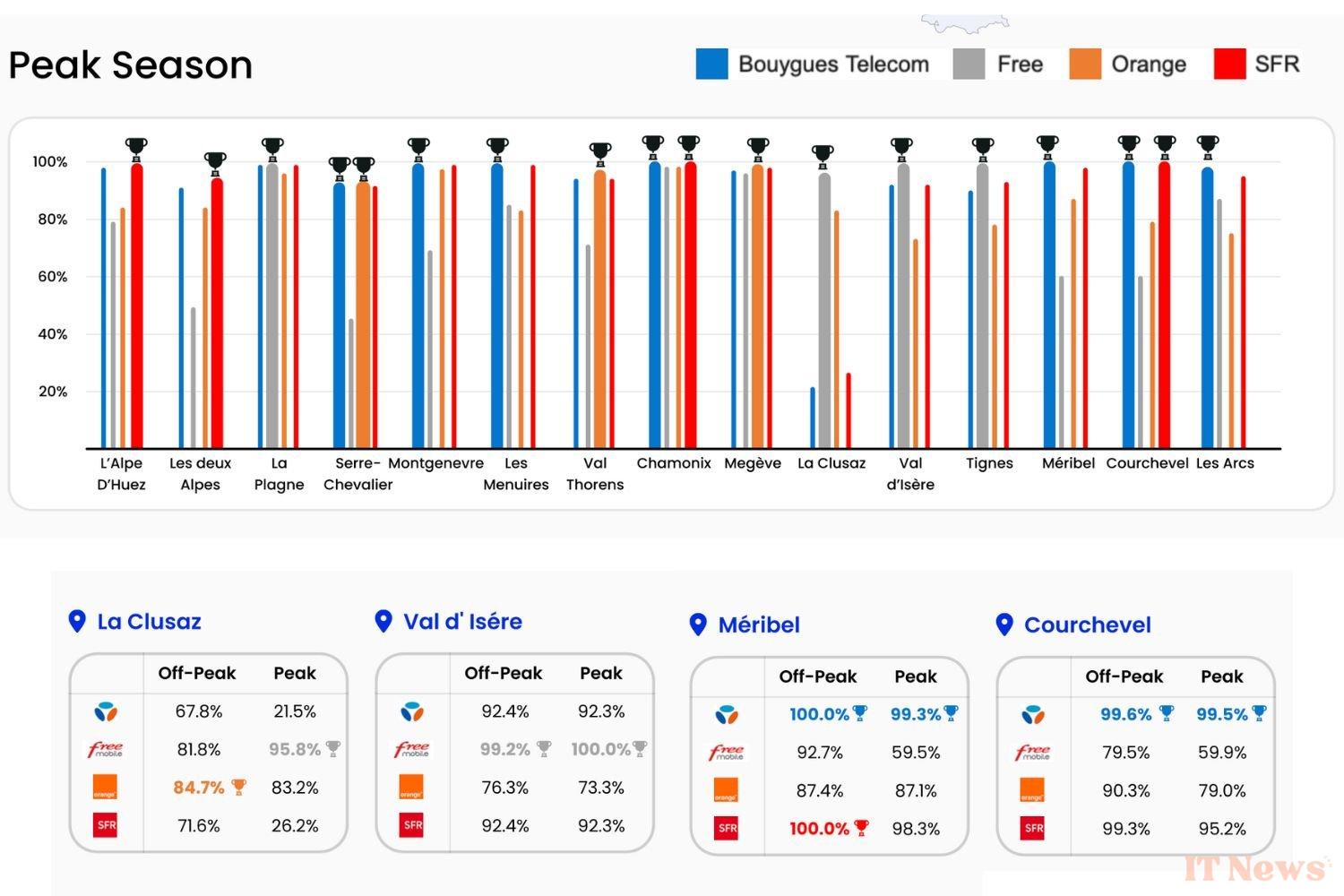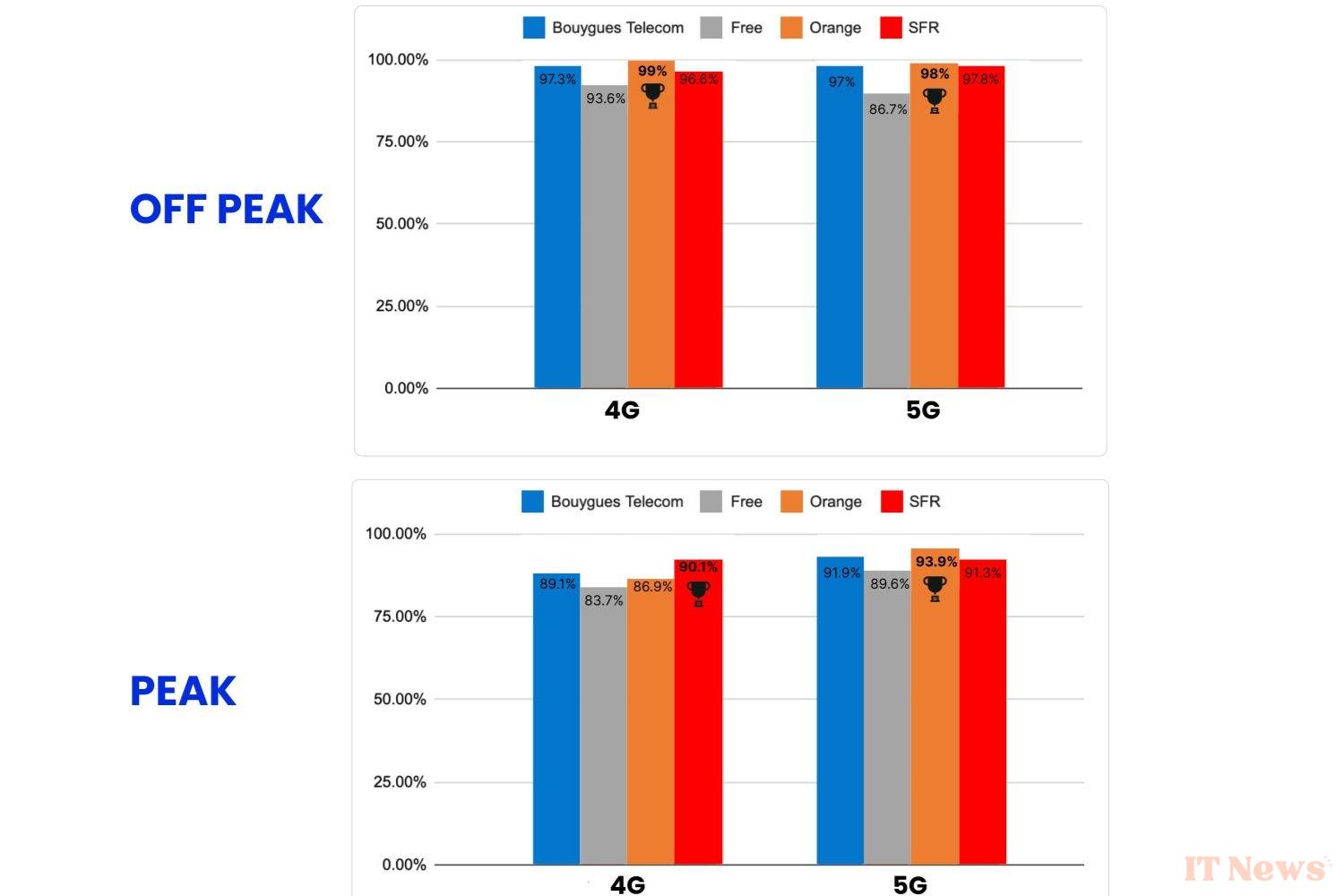Did you think that your skiing holiday would allow you to stop being constantly in front of your smartphone, due to lack of network? Not so sure: according to a study by the company Mozark, a specialist in measuring telecom networks, the high peaks of France are now very well connected to 4G and 5G.
The company (formerly Qosi) carried out measurements in 15 resorts in the Alps, during two periods: the first during the "low season", from December 9 to December 20, 2024, and the second during the "high season", from December 26, 2024 to January 3, 2025, i.e. at the height of peak attendance. The idea: to measure the average experience of a user who would have passed through these Alpine villages with a 4G or 5G smartphone during these two periods: Méribel, Les Arcs, Courchevel, L’Alpe D’Huez, Les Deux Alpes, La Plagne, Montgenèvre, Les Menuires, Chamonix, Megève, La Clusaz, Tignes, Serre-Chevalier, Val Thorens and finally Val d’Isère.
In the background, the objective was mainly to observe how the 4G and 5G networks of the four operators, Bouygues Telecom, Free Mobile, Orange and SFR, have more or less well “ resisted” the crowds, by comparing the measurements taken at peak with those recorded in low season.
Progress since last year
To successfully carry out their study available on the company's website, Mozark teams equipped themselves with 16 new Samsung Galaxy S24s. For each, two customer profiles were created: a 4G subscriber and a 5G subscriber. While the latter could easily go up to 5G, while switching back to 4G if 5G is not accessible, the former corresponded to a user who would have only had a 4G subscription.
Mozark technicians took static or moving measurements at the bottom of the slopes, at the top of the lifts, in parts of the village. In total, between 10 and 15 points per station were identified. Once at the measurement location, several tests were carried out. In addition to the call quality – very satisfactory – and which we will not dwell on, tests of latency, download and upload speeds, web page loading, and video streaming were carried out. Nearly 48,592 measurements were taken for the high season, and 20,972 for the low season.
First lesson, the study shows "excellent connectivity of ski resorts" in the Alps. So goodbye to the forced or sought-after retirement from winter sports, goodbye to "I have no more network" or "I have bad reception". According to Fabien Renaudineau, co-CEO and co-founder of Mozark, "there is homogeneity, both between (ski) resorts and between operators or almost". Results that represent aclear improvement over last year, when the company conducted similar measurements. Twelve months earlier, the results were more "disparate" - they were not published, in fact.
Overall, the trend for operators is as follows: Orange is still in the lead on average, but is closely followed by SFR and Bouygues, the "white bonnet and white bonnet". Free remains a little behind, particularly on 5G.
Excellent access to the 5G network
And that's what the technicians focused on first. The idea here was to find out whether phones that were supposed to be connected to 5G were actually connected to 5G – without switching to 4G, including at the top of the peaks. Mozark therefore measured what is called the “percentage of 5G connections”, which gives an indication of coverage but does not necessarily translate into a perfect customer experience.
And across all measurements, the results are unequivocal. We are approaching an average 5G connection rate of over 80% for the four operators, with the exception of certain villages such as La Clusaz where Bouygues Telecom and SFR have surprising results.
5G was only available for these two operators in 21.5% and 26.2% respectively, well below the performances recorded in the other stations which are above 80%. A breakdown could explain these figures – the information has not been officially confirmed.
In Serre Chevalier (45%) and Deux-Alpes (48%), it is Free which presents results, well below the average. But with the exception of these four elements, 5G profiles, who pay to have 5G, are found, in the majority, on this network since almost all the rates fluctuate between 80 and 100%, including during peaks in use.
Web browsing: nearly 90% success for the 4 operators
Once access to the 5G network was measured, Mozark sought to evaluate our most frequent uses among the operators, starting with web browsing. Specifically, 10 web pages were launched at each measurement point (location).
And they loaded in less than five seconds in the majority of cases. For 5G during peak periods (high season), Orange is in the lead (93.9% page loading success, in less than 5 seconds) and Free not far behind, but in last position (89.6%) after Bouygues (91.9%) and SFR (91.3%). On this measure, the operators are therefore neck and neck, and the gaps that could be seen a few years earlier have narrowed considerably.
The quality of the streaming: a near flawless performance
Mozark then tried to play a one-minute 720p video (in high definition) on smartphones, again at different points in the ski resorts. The aim here was to evaluate the quality of the playback, buffering, and execution time. During the "peak" period, streaming videos were downloaded in 720p, in less than a minute and without any problems in 95% of cases for 5G, and in 90% of cases for 4G - on average.
This time, it is Free and SFR who dominate the ranking for 5G during the peak of use (96.3%), closely followed by Orange (95.6%) and Bouygues (95%). The operators stand out a little more if we look at download speeds.
Average download speeds at the top, with Free lagging behind
In terms of download speeds (the download speed observed here for a 250 MB file), Orange is still the 1st on the podium for 5G (in peak season) with performances of 206.2 Mbit/s, followed by the SFR duo (197.2 Mbit/s) – Bouygues Telecom (187.8 Mbit/s), with Free far behind (76.2 Mbit/s).
On the 4G download speed side, Orange still has the highest performance (67.1 Mbit/s), followed very closely by Bouygues (58.1 Mbit/s), SFR (54.8 Mbit/s) and Free (38.9 Mbit/s).
There is therefore a real gain when moving from 4G to 5G with performances that double for Free and triple for Orange, SFR and Bouygues. Why is Free less efficient than the other operators, according to these measurements? In addition to delays in network optimization that could explain this, Xavier Niel's company has fewer 5G 3.5 GHz antennas (known as "true 5G") than the others, according to the website of the National Frequency Agency (ANFR), the public institution that manages the public domain of radio frequencies. In September 2024, Free was positioned as the last in terms of the number of "technically operational 5GNR3500 antennas" with 6,947 5G 3.5 GHz antennas, compared to 8,314 for Bouygues Telecom, 8,681 for SFR, and 10,401 for Orange.
Upload speeds still a little below
On the upload speed side (sending files, photos), there is no surprise here either: they always have much lower performance than download speeds, particularly because as a general rule, we mainly consume download bandwidth (streaming/downloading music, videos). In other words, we send far fewer large files than we receive.
During peak traffic, Orange is still first with 34.7 Mbits/sec for 5G, tied with SFR, followed by Bouygues (31.3 Mbits/sec) and Free (18.5 Mbits/sec). If you plan to do a video call at the top of the slopes, which requires as much sending as receiving, this should be more than enough. From around twenty Mbits, you get a "average quality video call," Fabien Renaudineau, who co-manages Mozark, tells us. Understand: of sufficient quality to actively participate in a virtual meeting.
For the CEO, these good results can also be explained by the coexistence of 4G and 5G, one of which (5G) allows the other (4G) to be efficient, without being saturated. The fact remains that all these measures were taken with a big unknown: the exact load that these networks are subjected to, during peak periods. On this point, the operators have not yet communicated to what extent their frequencies are used: do vacationers and seasonal workers really consume as much data as in the city? Once seated on their chairlift, or standing on their skis, do they remain glued to their smartphone, switching from one video to another or from one post to another without glancing at the landscape? The study does not answer the question.






0 Comments